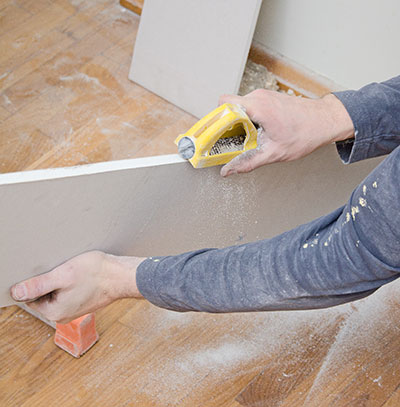 The function of the next information is to assist the beginner do-it-yourselfer accomplish his/her first drywall restore, with minimal steps, tools and supplies. Since most of the houses I restore are within the Cincinnati, Ohio, area, I am going to focus this discussion towards conventional drywall, finished with a clean texture. If your own home’s walls are manufactured from plaster, I would not suggest attempting a repair your self. With plaster, it is best to leave it to a professional skilled.
The function of the next information is to assist the beginner do-it-yourselfer accomplish his/her first drywall restore, with minimal steps, tools and supplies. Since most of the houses I restore are within the Cincinnati, Ohio, area, I am going to focus this discussion towards conventional drywall, finished with a clean texture. If your own home’s walls are manufactured from plaster, I would not suggest attempting a repair your self. With plaster, it is best to leave it to a professional skilled.
After the drywall mud has dried, Use a ten or twelve inch drywall knife to coat around all sides of your drywall patch. Feather out the edges of the mud so that they blend properly with the encompassing area. Use at the very least two thin coats of drywall mud to coat over the top of your patch. In some cases, it may be finest to make use of three thin coats of mud to completely conceal the restore. Be cautious to not add an excessive amount of mud with each coat as an excessive amount of buildup on the surface could also be seen as soon as it’s painted.
Let me be clear on this one. As quickly as I see the smallest spot of paper, I cease sanding. I’m not suggesting that you simply sand off all of your mud so all of the paper in your patch is exposed. For me it is best to get close as a result of much less mud on the patch means less floating later attempting to stage out the raised area I simply created. Go over all the sq. with a layer of drywall compound, utilizing a big utility knife. Allow it to dry before adding several extra coats. Add a slightly thicker layer with every coat till your patch is covered adequately. Smooth with a big knife repeatedly and sometimes, feathering on the edges and starting and finishing from different instructions.
Butter the outlet with joint compound. The patch is held in place by joint compound, which needs to be nicely blended to get rid of small bubbles that might later must be sanded out. Apply joint compound to the inside edges of the opening within the drywall and to the surface space of the patch 6. Don’t be afraid to put it on thick. Once every little thing is completely dry, using a hundred and fifty grit sandpaper sand the area calmly to take away any software marks. If the encompassing space is textured you might need to texture the world that you just repaired. for tips about matching drywall textures see this article.
I knew the telephone line wasn’t energetic, so I didn’t have to fret about getting shocked. And sure, you may catch an electrical thrill off of a phone line—kind of like putting your tongue on a 9-volt battery. And who hasn’t done that? The level is, a shock from a phone line won’t injure you, but it’s not precisely a warm fuzzy feeling both. Commonly, you may be coping with one or more of three various kinds of wall holes – nail holes and dents, small doorknob size holes and larger holes attributable to fists and furniture. In this text I’ll clarify a quite simple repair technique for a small drywall holes. This will work great on holes lower than 6 inches, similar to doorknob holes.